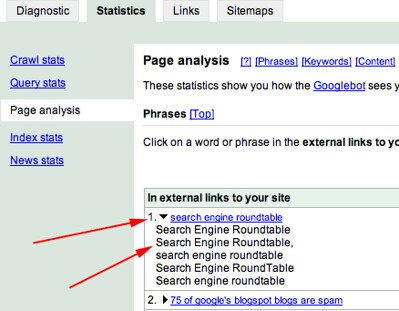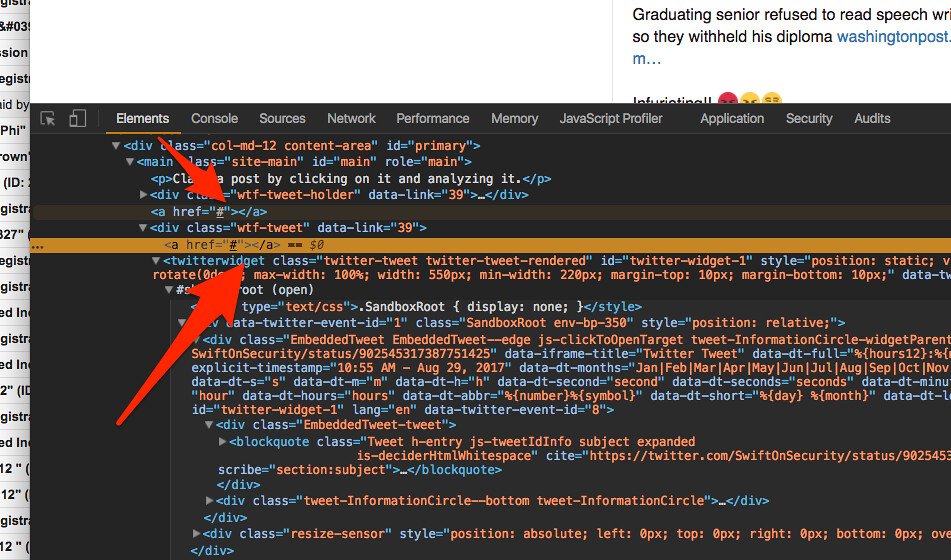In the labyrinth of interconnected webpages, where every link holds the potential to unlock a world of valuable information, there lies a secret power that often goes unnoticed. Like an invisible thread weaving through the vast digital tapestry, anchor texts silently guide us, leading us from one knowledge nugget to another. These unassuming words, hidden in plain sight, play a crucial role in the intricate dance of internal linking. Today, dear readers, we embark on a journey to unveil the significance of anchor texts and their untapped potential, unlocking the hidden gems that lie within. So, fasten your seatbelts and prepare to explore the mysterious world of anchor texts, where words become the gateway to a realm of limitless knowledge. Welcome to “.
Table of Contents
- Unleashing the Power of Anchor Texts: A Key Component of Internal Linking Strategies
- Exploring the Significance of Anchor Texts in Enhancing Website SEO
- Unveiling the Untapped Potential: Harnessing Anchor Texts for Better User Engagement
- Optimizing Internal Links: Best Practices and Recommendations for Effective Anchor Text Implementation
- Q&A
- The Conclusion

Unleashing the Power of Anchor Texts: A Key Component of Internal Linking Strategies
Anchor texts play a crucial role in boosting your website’s SEO and improving user experience. They serve as clickable links that direct users to different pages within your website. Think of anchor texts as signposts that guide both search engines and visitors to relevant content. But what makes them so powerful? And how can you optimize their use in your internal linking strategy? Let’s dive in and uncover the hidden gems of anchor texts!
1. Connect the dots: By strategically using anchor texts, you can create a web of interconnected pages within your website. This helps search engines understand the relationship between different pieces of content and gives them a clear indication of the importance and relevance of each page.
2. Context is key: When choosing anchor texts, it’s important to consider the context in which they appear. If you’re linking to a blog post about “best hiking trails,” using an anchor text like “click here” won’t provide any context. Instead, opt for a descriptive anchor text like “top hiking trails in XYZ region.” This not only helps users know what to expect, but it also gives search engines valuable information about the content of the linked page.
3. Make it natural: While anchor texts should be descriptive, avoid keyword stuffing or over-optimizing. Remember, the primary purpose of anchor texts is to enhance user experience, not solely to boost SEO. If a keyword or phrase flows naturally within the sentence, use it as an anchor text. But if it feels forced or unnatural, opt for a more organic alternative.
So, now that you understand the power of anchor texts, take a fresh look at your website’s internal linking strategy. Are you effectively guiding users through your content? Are search engines able to make sense of the relationships between your pages? Use anchor texts strategically, keeping in mind the importance of context and natural language, and unlock the hidden gems that will elevate your website’s performance.
Exploring the Significance of Anchor Texts in Enhancing Website SEO
Anchor texts play a crucial role in enhancing website SEO, acting as hidden gems that can greatly impact search engine rankings. When it comes to internal linking, the significance of anchor texts becomes even more apparent. These clickable words or phrases not only provide context for both users and search engines but also contribute to the overall structure and organization of your website.
One of the key benefits of anchor texts is that they help search engines understand the content of the linked page. By choosing relevant and descriptive anchor texts, you can give search engines a better understanding of what the linked page is about. For example, instead of using a generic phrase like “click here,” using a more specific anchor text like “best SEO practices” tells both users and search engines that the linked page provides valuable information on that topic. This can greatly improve the relevance and visibility of your website in search engine results pages (SERPs).
Furthermore, anchor texts are instrumental in distributing link authority across your website. When you use anchor texts to internally link to other pages within your website, you are essentially connecting different parts of your site and sharing the SEO value or “link juice” between them. By including relevant anchor texts in your internal links, you can guide search engines to understand the hierarchy and importance of the linked pages. This not only enhances the user experience by allowing visitors to navigate seamlessly through your site but also signals to search engines the significance of certain pages relative to others.
Unveiling the Untapped Potential: Harnessing Anchor Texts for Better User Engagement
Anchor texts may seem like small, inconspicuous elements of a webpage, but they hold immense power when it comes to user engagement and search engine optimization. Think of them as the breadcrumbs that guide users through the labyrinth of your website, helping them discover more valuable content and ultimately increasing their time spent on your site. So, how exactly do anchor texts work their magic?
1. Relevant and descriptive: The key to effective anchor texts lies in their relevancy and descriptiveness. Instead of using generic terms like “click here” or “read more,” opt for anchor texts that accurately describe the content they are linking to. For example, if you have a blog post about the benefits of organic gardening, consider using an anchor text like “Discover the incredible advantages of organic gardening.” By providing users with a clear understanding of what they can expect when they click on a link, you’re setting the stage for heightened engagement.
2. Enhance SEO value: Anchor texts also play a crucial role in improving your website’s search engine optimization (SEO). When search engines crawl your website, they analyze the anchor text to determine the relevance and quality of the linked content. So, if you’re aiming to rank higher on search engine results pages, ensure that your anchor texts incorporate keywords related to the linked page. However, it’s essential to strike a balance and avoid over-optimization, as search engines prioritize natural and user-friendly experiences.
In conclusion, anchor texts may appear insignificant at first glance, but they hold immense potential to boost user engagement and improve your website’s visibility in search engine results. By using relevant and descriptive anchor texts, you guide users through your website, increase their time spent exploring valuable content, and enhance your SEO efforts. So, take advantage of these hidden gems and watch as your user engagement and website performance soar to new heights.
Optimizing Internal Links: Best Practices and Recommendations for Effective Anchor Text Implementation
Internal linking is a crucial element in optimizing your website’s performance and improving its search engine rankings. Within this context, anchor texts play a vital role in guiding users and search engines to relevant content. They serve as clickable links that provide context and help establish the topic of the linked page. Understanding best practices and implementing effective anchor texts is essential for maximizing the impact of your internal link structure.
When it comes to optimizing internal links, here are some best practices and recommendations for implementing anchor texts effectively:
1. Choose descriptive and relevant anchor texts: Ensure that your anchor texts accurately describe the content of the linked page. Instead of using generic phrases like ”click here,” opt for specific keyword-rich texts that provide context and add value to the overall user experience.
2. Maintain a natural balance: Use a mix of different anchor texts throughout your website to maintain a natural and diverse link profile. This helps search engines understand the relevance and quality of your content.
3. Avoid excessive use of exact match anchor texts: While it’s important to include keywords in your anchor texts, overusing exact match anchor texts can be perceived as spammy by search engines. Aim for a balanced approach by incorporating variations and synonyms of your targeted keywords.
4. Use proper formatting: HTML tags such as bold and italic can be used to emphasize and highlight your anchor texts. This helps users easily identify the linked content and encourages them to click on the link.
By following these best practices and recommendations, you can ensure that your internal links are optimized for maximum visibility and user engagement. Remember, a well-structured and well-implemented anchor text strategy can significantly boost your website’s performance and drive more organic traffic. So, start exploring the hidden gems of anchor texts and unlock their true potential in internal linking.
Q&A
Q: What are anchor texts and why are they considered hidden gems in internal linking?
A: Anchor texts are the clickable text within hyperlinks on a webpage. They are hidden gems in internal linking because they hold the key to boosting a website’s search engine optimization (SEO) and improving user experience.
Q: How do anchor texts affect SEO?
A: Anchor texts play a crucial role in SEO by providing search engines with context about the linked page’s content. Relevant anchor texts help search engines understand the relevance of the destination page and improve its visibility in search results.
Q: Can you provide an example of an effective anchor text?
A: Certainly! Instead of using a generic anchor text like “click here,” an effective anchor text for a webpage about healthy recipes could be “delicious and nutritious recipe ideas.” This text directly reflects the content of the linked page and increases its chances of ranking higher in relevant searches.
Q: Are there any best practices for using anchor texts in internal linking?
A: Yes, there are a few best practices. Firstly, anchor texts should be informative and descriptive, providing users with a clear idea of what they’ll find on the linked page. Secondly, using relevant keywords in anchor texts can further boost SEO. However, it’s crucial not to overdo keyword usage, as it may be seen as spam by search engines.
Q: Is it important to vary anchor texts or can the same one be used repeatedly?
A: Varying anchor texts is essential for optimal internal linking. Using the same anchor text repeatedly may bore users and make your website appear less credible to search engines. By diversifying your anchor texts, you increase the chances of attracting more visitors and improving SEO.
Q: Can internal linking alone improve a website’s SEO?
A: Internal linking is undoubtedly a valuable SEO technique, but it should be combined with other strategies for optimal results. Creating high-quality content, earning backlinks from reputable websites, and optimizing on-page elements all contribute to a comprehensive SEO strategy.
Q: How can anchor texts enhance user experience?
A: Anchor texts serve as signposts for users, indicating what information they can expect when they click a link. By using descriptive anchor texts, visitors can easily navigate through your website and find the desired content. This overall improves user experience and encourages them to explore further.
Q: Are there any potential pitfalls to be aware of when using anchor texts for internal linking?
A: Yes, there are a few pitfalls to avoid. Firstly, using overly long anchor texts can be unwieldy and deter users from clicking on the link. Secondly, using misleading anchor texts unrelated to the linked page’s content can lead to a negative user experience, ultimately harming your website’s credibility.
Q: Can external websites influence internal anchor texts on your website?
A: No, external websites cannot directly influence internal anchor texts on your site. However, collaborating with other websites and earning backlinks can indirectly increase your website’s visibility, attracting more users who may then create anchor texts from their own articles when linking to your pages.
Q: What are some helpful tools or resources for optimizing anchor texts in internal linking?
A: There are various tools available to help optimize anchor texts. SEO plugins like Yoast for WordPress offer insights and suggestions. Additionally, Google Search Console and Google Analytics provide valuable data on website performance, which can guide internal linking strategies and improve anchor texts.
The Conclusion
As we conclude this journey through the tantalizing world of internal linking, we can’t help but marvel at the hidden gems we have unearthed. The concept of anchor texts, often overlooked and underestimated, has revealed its true power in driving our websites towards unrivaled success.
Like a compass guiding explorers through uncharted territory, anchor texts serve as the beacon of relevance and context within the vast sea of information online. They connect our webpages, weaving a tapestry of interconnected knowledge that not only enhances user experience but also amplifies search engine visibility.
Just imagine it, dear reader, the transformative potential of carefully crafted anchor texts. They possess the captivating ability to entice and allure both users and search engines, ushering them to explore the richness of our digital domains. Anchored at the intersection of logic and creativity, these textual anchors effortlessly captivate readers’ attention while simultaneously guiding the mighty algorithms of search engines.
But be warned, for the power of anchor texts comes with great responsibility. As we navigate this intricate terrain, we must exercise our wisdom and discernment, for haphazardly sprinkled keyword-stuffed anchors can prove disastrous to our web domains. It is only through the delicate balance of relevance and strategic placement that we can truly harness the latent potential of anchor texts.
So, fellow adventurers, let us not overlook these luminous gems concealed within our websites. Let us embrace the transformative role of anchor texts in our internal linking strategies, empowering our digital realms with newfound visibility, authority, and an unparalleled user experience.
As we bid farewell, may the journey of discovery continue as we unravel more concealed secrets within the vast landscape of web development. Embrace the might of anchor texts, and unlock the hidden power that lies within.

